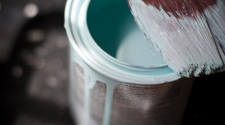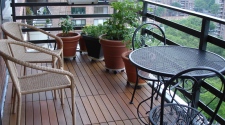Painting is more of an art form than a profession. If a painter is good in painting water reflections then it is a remarkable quality of his/her artwork. Even water has got several traits such as still water, lazy motion, ripples creating more motion, torrential water that one cannot see reflections in.
If water moves down slope and the wind causes disturbance then it creates diverse reflections in its path. Most of the artist try to paint the water which is stand still or moving lazily. These artists show painting which shows still water or lazy water. Most of the water painting are alike unless there are some special effects put in the same such as sunlight hitting a portion of water surface and boats moving in the water.
There are three types of water bodies vis-a-vis shallow water, under water and deep water.
- Shallow water: Creates ripples and moves over rocks and debris. This causes patterns of broken reflections in which shallow water is lighter and turquoise in color. The artist can use quick, energetic brushwork which can be used from side to side with a thin brush.
- Deep water: The calmer water generally reflects the immediate surroundings based on color of sky. Usually,the ocean water is very deep blackish blue in color so one needs to use broad brushwork with a larger flat brush.
- Under the water: Shallow water is usually green in color which is generally shown in case of rocks, and algae underneath the surface.
Thumb Rules for Painting Water Reflections:
There are a few thumb rules for painting water reflections:
- Areas which is dark on dry land becomes lighter in water
- Areas which is lighter on dry land will become darker in the water
- White color is in grayed color down in the water
- Water absorbs air so it is always darker than sky when one is trying to show the mirror image.
Although, painting water is a fair subject but it is highly affected with its surroundings, reflections and depth. A painter can paint oceans, rivers, and lakes and it is managed to get water reflections which is still very challenging. The artist needs to make careful observation about how he/she actually perceives and what he/she thinks, will help paint realistic water texture.
Author Bio:
Bob Ransley was born in New England, and has constantly been on the move and has stayed across a variety of locations. He has been living in Maine for the past 6 years now, and his travels have been his inspiration for many of his finest works. He has become America’s most known colorist, due to the vast number of shades that he employs in his paintings. Robert Ransley can be followed on social media at @Twitter , Google+ , Linkedin and Facebook. For more background information on Bob , see his full bio over here.













